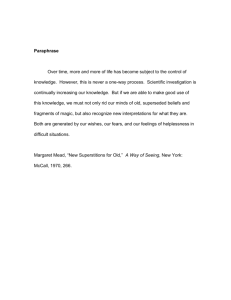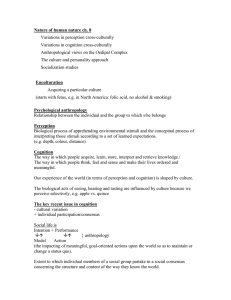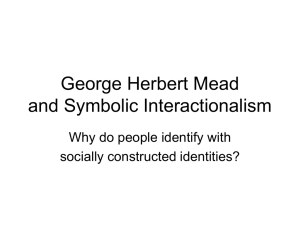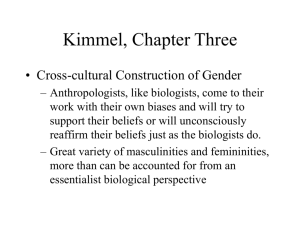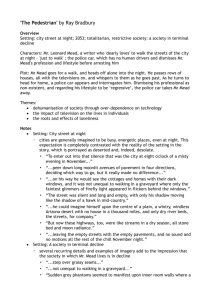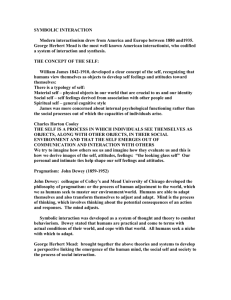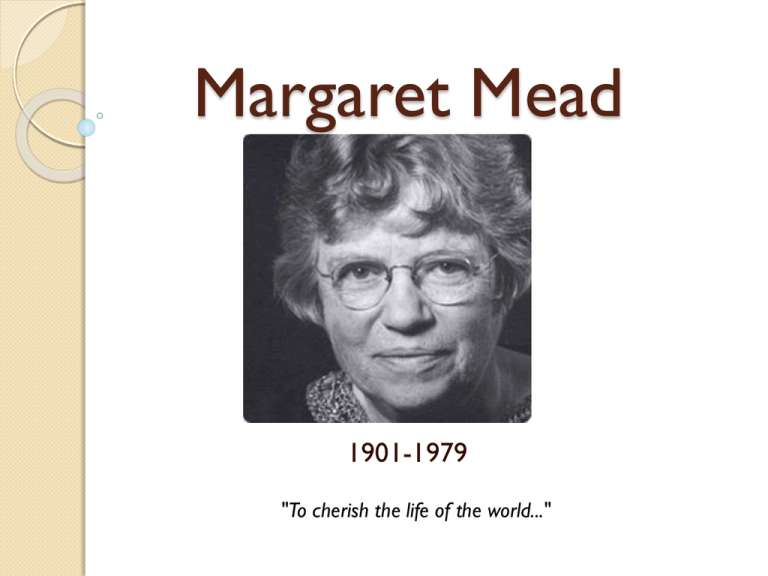
Margaret Mead
1901-1979
"To cherish the life of the world..."
Margaret Mead is a world famous
Anthropologist
Born in Philadelphia PA in 1901
Studied Anthropology at Bernard College
Continued studies for PH.D at Columbia
university
Her most famous work is Coming of Age in
Samoa (1928)on "the psychological attitude of
the individual under the pressure of the general
pattern of culture" to relate Samoan
adolescents to those of the United States.
While studying the culture she stayed with an
American family in the naval dispensary on Ta’u
She did extensive research and kept numerous
field notebooks and diaries of all her
observations, from small notes to diagrams of
their homes.
She related her studies wondering are the
attitudes of the adolescents due to “nature or
nurture”
What she discovered was that the behaviors
and attitudes/personalities of these subjects
was more influence by their culture, than
genetics.
Margarets’ second most famous research is
Growing Up in New Guinea (1930) which is a
continuance of her research in Samoa.
This research , though still looking at
adolescents, focused on the thought process
of children.
She studied the Manu tribe in New Guinea
She found that the children were forced to
grow up and learn quickly. They had to learn
how “swim, maintain balance, and paddle a
canoe” the only skills they were not taught
were those for their own well being.
Mead felt though they were learning to be
adults is did not prepare them for a real adult
life.
Margaret conducted research to see how children
learned by having the adolescent boys and girls of the
tribe draw pictures.
After collecting many pictures she noticed that there
was a difference in the way the males and famales
thought, because the males would draw more “realistic”
artwork about scenery or animals or something
important to them. The females on the other hand drew
with color and drew more designs then specific objects.
From this observation she then wanted to test the
children with ink blots to see if there was a difference in
results between the males and famales.
What she found was they all related the blots to items
in their culture, such as animals and when they couldn’t
find something to relate they called it a ““Tchinalis a
"land devil "” which the adults made to threaten the
children.
Other famous writings of Margaret Mead.
Sex and Temperament 1935
Male and Female 1949
Growth and Culture 1951
Blackberry Winter 1972
Letters from the Field 1978
Works Cited
http://anthropology.usf.edu/women/mead/margaret_mea
d.htm
http://www.loc.gov/exhibits/mead/field-samoa.html
http://www.loc.gov/exhibits/mead/field-manus.html

